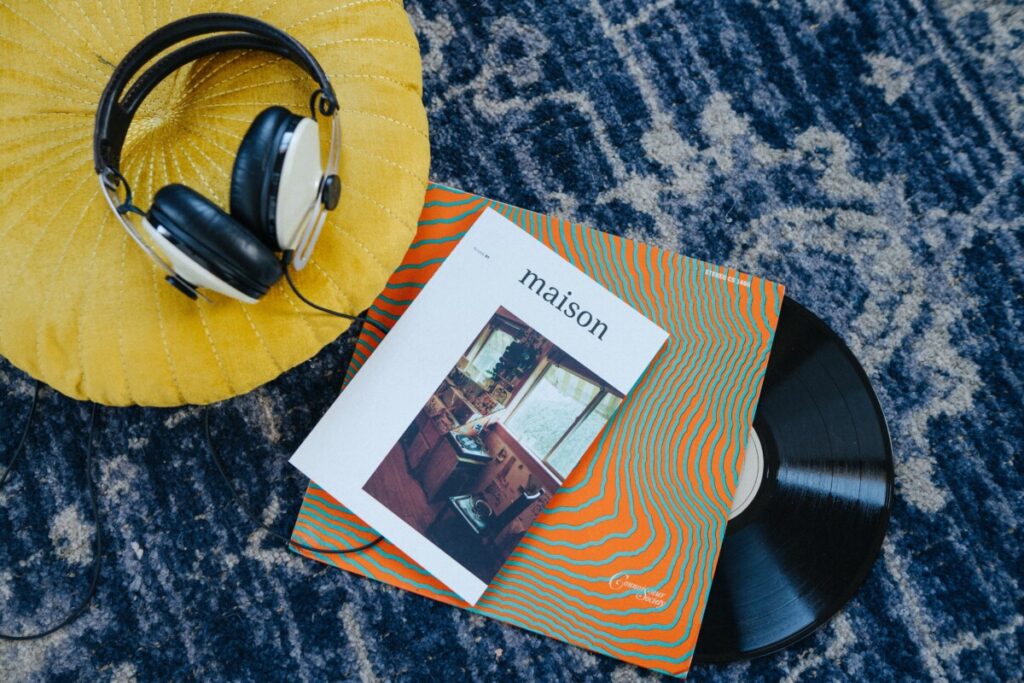A music press release is an important tool for musicians to promote their music and keep their fans, media outlets, and music industry professionals up-to-date with their latest developments.
A music press release is a written document that provides information about the musician or band, their upcoming music releases, tour dates, or any other news related to their music. A music press release aims to create publicity, generate interest, and increase visibility within the industry.
Creating an effective music press release is essential for the success of a music career. It helps to get the attention of the media and music industry professionals, leading to more coverage, fans, and, ultimately, more success. An effective music press release can create a buzz around a new music release, attract more people to live performances, and generate interest in crowdfunding campaigns or fundraising events.
Here is our step-by-step guide to crafting an effective music press release.
- Identify Your News
- Write an Attention-Grabbing Headline
- Craft an Engaging Introduction
- Provide Relevant Details
- Include Quotes & Testimonials
- Add Multimedia
- Keep it Concise
- Include Contact Information
- Edit & Proofread
- Choose Distribution Channels
- Create a Media List
- Send Out Your Press Release
- Track Your Results
- Increase Your Visibility
- Related Questions

IDENTIFY YOUR NEWS
Identifying the news or announcement that you want to share in your music press release is an essential first step. Before crafting your press release, it’s important to determine what your news is and how it can benefit your music career. The news you include in your press release should be timely, relevant, and of interest to your target audience.
There are several types of news that you can include in a music press release, such as new music releases, tour announcements, collaborations, awards, milestones, crowdfunding campaigns, and fundraising events. For example, if you’re releasing a new album, you can share the album’s title, release date, tracklist, and cover art in your press release. You can also include information about your album launch party or tour dates.
If you’re announcing a tour, you can include details about the cities and dates where you will be performing and information about ticket sales and special guests. If you’re collaborating with another artist or producer, you can include details about the collaboration, what fans can expect, and how it came about.
Overall, the news you choose to include in your music press release should be relevant to your music career and audience. It should be something that will generate interest and excitement and keep people engaged with your music. By identifying your news, you can create a compelling press release that will help you achieve your music career goals.
WRITE AN ATTENTION-GRABBING HEADLINE
The headline is the first thing that the reader will see when they come across your music press release, so it’s essential to make it catchy and attention-grabbing. Your headline should be short, simple, and accurate, reflecting the content of your press release.
Here are some tips for writing a catchy headline:
- Keep it short: Your headline should be no more than 10-15 words. Shorter headlines are easier to read and are more likely to catch the reader’s attention.
- Use active language: Using active verbs can help make your headline more engaging and interesting.
- Make it relevant: Your headline should accurately reflect the content of your press release. Don’t use misleading or clickbait headlines that don’t accurately represent your news.
- Use numbers: Including numbers in your headline can make it more eye-catching and memorable.
- Ask a question: Asking a question in your headline can pique the reader’s curiosity and encourage them to read on.
Here are some examples of effective headlines:
- Lucky Mint Releases Debut Album “Faster Now”
- Alt-Rock Band Lucky Mint Announces Nationwide Tour
- Lucky Mint Collaborates with Grammy-Nominated Producer on New Album
- Lucky Mint Wins Best New Artist Award at the Alternative Music Awards
- Lucky Mint Launches Crowdfunding Campaign for Music Video

CRAFT AN ENGAGING INTRODUCTION
The introduction is the next important part of your music press release, and it should be engaging and attention-grabbing to keep the reader interested. Your introduction should briefly summarize the main points of your press release, including who you are, what you are announcing, and why it is important.
Here are some tips for writing an engaging introduction:
- Hook the reader: Your introduction should hook the reader and make them want to read more. Use a bold statement, an interesting fact, or a compelling story to capture their attention.
- Keep it brief: Your introduction should be no more than 2-3 sentences. It should provide a brief summary of the main points of your press release without going into too much detail.
- Provide context: Your introduction should provide context for your news. Explain why it’s important and how it fits into the larger context of your music career.
- Use descriptive language: Use descriptive language to paint a picture of your news and make it more interesting and engaging.
Here are some examples of engaging introductions:
- Lucky Mint, the dynamic indie-rock band from Rexburg, Idaho, is thrilled to announce the release of their debut album, “Faster Now.”
- Indie-rock band Lucky Mint is set to embark on a nationwide tour to promote their latest album.
- Lucky Mint, the rising indie-rock sensation, has collaborated with Grammy-nominated producer Ryan Wilkinson on their latest album.
- Lucky Mint, the up-and-coming indie-rock band from Idaho, has won the Best New Artist award at the Idaho Music Awards.
- Lucky Mint, the indie-rock band known for their energetic and emotionally charged music, has launched a crowdfunding campaign for their latest music video.
PROVIDE RELEVANT DETAILS
When crafting a music press release, it’s important to provide relevant details that help the reader understand the news or announcement. This includes information about the artist or band, details about the music release, and any upcoming tour dates or collaborations. You can provide a complete picture of the news by including relevant details and helping the reader connect with the story.
Tips for including important details in the press release include:
- Be concise: While it’s important to include relevant details, it’s equally important to be concise and avoid overwhelming the reader with too much information. Stick to the most important details and avoid going into unnecessary detail.
- Use bullet points: Using bullet points can help to organize and highlight important details clearly and concisely.
- Be specific: Use specific details and numbers to make the news more tangible and interesting to the reader. For example, if announcing a tour, including the number of cities or dates on tour.
Examples of relevant details to include in a music press release might include:
- The artist or band’s name and a brief bio
- The name and release date of the new music
- A description of the new music, including genre and themes
- Tour dates and locations
- Collaborating artists or producers
- Contact information for the artist’s management or publicist

INCLUDE QUOTES & TESTIMONIALS
Including quotes and testimonials in a music press release can help to add credibility and interest to the story. Quotes can come from the artist or band, collaborators, or industry professionals. Testimonials can come from fans or early listeners who have had a chance to hear the new music. By including quotes and testimonials, you can add a personal touch to the press release and make it more engaging to read.
Tips for selecting the right quotes and testimonials include:
- Choose quotes that support the news or announcement being made
- Quotes should relate to the news or announcement and help to reinforce its importance or significance.
- Use quotes from recognizable sources
- Quotes from industry professionals or well-known collaborators can help to add credibility and interest to the press release.
- Keep quotes concise
- Quotes should be brief and concise, capturing the speaker’s essence without being too long-winded.
Examples of effective quotes and testimonials to include in a music press release might include:
- “We’re incredibly proud of this album and can’t wait for our fans to hear it,” says lead vocalist Jerren Devine.
- “Working with Lucky Mint on this album was a true pleasure,” says producer Ryan Wilkinson. “Their talent and dedication to their craft are evident in every note, and I’m confident that Faster Now will be a hit with music lovers everywhere.”
- “Faster Now is a true masterpiece,” says music critic Mike Oxlong. “It showcases the unique sound and style of Lucky Mint while also pushing the boundaries of what’s possible in alt-pop. This is an album that everyone should hear.”
ADD MULTIMEDIA
In today’s digital age, multimedia content has become integral to any press release. Including photos, videos, and audio clips can help to engage readers, provide a richer experience, and make the press release more shareable on social media.
Adding multimedia to a music press release can be particularly effective, allowing readers to hear or see the artist’s music in action. For example, a link to a music video or audio clip can help showcase the artist’s sound and style and may encourage readers to listen to the full album or attend a live performance.
Check out our in-depth guide to Creating A Band Image: How To Develop Your Look & Sound.
When incorporating multimedia into a music press release, it’s important to choose relevant and engaging content. Avoid including generic or low-quality content, as this can detract from the overall impact of the press release. Instead, select multimedia content that reflects the artist’s unique style and personality and will help capture the reader’s attention.
In addition to music videos and audio clips, other types of multimedia content can be effective in a music press release. For example, including high-quality photos of the artist can help to build their brand and create a more personal connection with readers. It’s also a good idea to include links to the artist’s social media profiles, where readers can follow them and stay updated with their latest news and updates.
Overall, adding multimedia to a music press release can help to increase its impact and reach a wider audience. By including relevant and engaging content, artists can showcase their music and create a more immersive experience for their fans.

KEEP IT CONCISE
When crafting a music press release, it’s important to keep it concise and to the point. Busy journalists and music industry professionals will likely ignore a press release that is too long or contains irrelevant information.
A music press release aims to provide relevant and interesting information about the artist’s music career in a clear and concise manner. This means cutting out unnecessary fluff or filler and focusing on the most important details.
To keep a music press release concise, it’s important to prioritize the most important information and focus on the key messages that the artist wants to communicate. This may include information about a new music release, tour dates, collaborations, or other news related to the artist’s music career.
Check out our in-depth guide to The Importance Of A Strong Band Name And Logo (With Examples).
It’s also important to use clear and straightforward language and avoid using complex or technical terms that may confuse readers. Instead, focus on using simple and direct language that is easy to understand.
One way to ensure that a music press release is concise is to have a clear structure and flow. This may involve breaking the press release down into sections, such as an introduction, details about the news, quotes and testimonials, and contact information. By organizing the press release in a logical and easy-to-follow way, readers will be able to quickly and easily understand the key messages.
Keeping a music press release concise is essential for ensuring it is effective and impactful. By focusing on the most important information and using clear and direct language, artists can create a press release that captures the reader’s attention and generates buzz within the music industry.
INCLUDE CONTACT INFORMATION
Including accurate and up-to-date contact information is essential to any music press release. After all, if a journalist or music industry professional is interested in covering your news, they need to be able to contact you or your team for additional information or to schedule an interview.
Failing to include contact information or providing incorrect contact information can make it difficult for interested parties to follow up, leading to missed coverage or publicity opportunities.
To ensure that your contact information is effective, make sure to include the following information:
- Your full name
- The name of your band or artist’s name
- Your management or publicist’s contact information, including their name, phone number, and email address.
- Your website or social media handles, where journalists can find more information about you and your music.
When including contact information in your press release, it’s important to ensure it is accurate and up-to-date. If your management or publicist has changed recently, update the contact information in your press release accordingly.
Some effective ways to include contact information in your music press release include adding it in the header or footer of your press release, at the end of your press release, or in a separate “contact” section.

EDIT & PROOFREAD
Once you’ve written your music press release, editing and proofreading it carefully is important to ensure it is error-free and reads smoothly. A poorly edited or error-ridden press release can detract from your credibility and make it less likely that media outlets will cover your news.
To edit and proofread your press release effectively, follow these tips:
- Take a break: After writing your press release, take a break for a few hours or even a day. This will help you approach your press release with fresh eyes when it’s time to edit.
- Review for clarity: Read through your press release to ensure it is clear and easy to understand. Make sure that your sentences are concise and that your writing flows smoothly.
- Check for errors: Carefully review your press release for spelling, grammar, and punctuation errors. Use a spellchecker, but don’t rely on it completely.
- Get a second opinion: Ask a friend or colleague to review your press release and provide feedback. A fresh perspective can help you catch errors or areas that need improvement.
- Read it out loud: Reading your press release out loud can help you catch errors and ensure your writing flows smoothly.
Some common mistakes to avoid when editing and proofreading your press release include using overly flowery language, using industry jargon that readers may not understand, and failing to catch spelling and grammar errors. With careful editing and proofreading, you can ensure that your music press release is polished, professional, and effective.
CHOOSE DISTRIBUTION CHANNELS
After crafting a music press release, the next step is to choose distribution channels for getting it in front of the right people. Several distribution channels are available for a music press release, and choosing the right one can make all the difference in your press release’s success.
One option is to distribute your press release via email. You can send your press release directly to media contacts or use a service that distributes your press release to a targeted list of journalists, bloggers, and other music industry professional. Email distribution can be effective because it lets you personalize your message and easily track who has opened and read your press release.
Another option is to distribute your press release via mail. While mail distribution is less common in the digital age, it can be effective if you are targeting specific media outlets or music industry professionals who prefer physical mail. However, mail distribution can be more expensive and time-consuming than email distribution.
Online distribution services like PR Newswire can also effectively distribute your music press release. These services distribute your press release to a wide range of media outlets, including major news sites, blogs, and social media platforms, helping you to reach a larger audience quickly.
Ultimately, your chosen distribution channel will depend on your budget, target audience, and personal preferences.
Here are some tips for choosing the right distribution channel:
- Consider your target audience and the distribution channels they will most likely use.
- Research the effectiveness and cost of each distribution channel.
- Consider using a mix of distribution channels to reach a wider audience.
- Personalize your message and follow up with media contacts after sending your press release.
Here are some examples of effective distribution channels:
- Email distribution services such as Mailchimp or Constant Contact.
- Targeted email lists compiled through research or purchased from media databases.
- Online distribution services include PR Newswire, Business Wire, or Globe Newswire.
- Social media platforms such as Twitter, LinkedIn, or Facebook.

CREATE A MEDIA LIST
Creating a media list is essential in effectively distributing your music press release. A media list is a compilation of media contacts, including journalists, bloggers, music critics, and other music industry professionals who may be interested in your news.
A media list allows you to distribute your press release directly to the people who are most likely to cover your news, increasing your chances of generating buzz and media coverage.
Here are some reasons why a media list is important:
- It helps you to target your message and get it in front of the right people.
- It lets you personalize your message and follow up with media contacts after sending your press release.
- It helps you to build relationships with media contacts and establish yourself as a credible source of news and information.
Here are some tips for creating an effective media list:
- Research relevant media outlets and identify the journalists and bloggers who cover music in your genre or niche.
- Use media databases, such as Muck Rack, to compile a list of contacts.
- Include contact information for each contact on your media list, such as email addresses and phone numbers.
- Personalize your message and follow up with media contacts after sending your press release.
- Keep your media list up-to-date, and remove any contacts who are no longer relevant.
Here are some examples of how to organize a media list:
- A spreadsheet with columns for a contact name, media outlet, email address, phone number, and notes on previous interactions or coverage.
- A customer relationship management (CRM) system like Hubspot or Salesforce lets you track your interactions with media contacts and build relationships over time.
- A dedicated contact management tool, such as Google Contacts that allows you to organize your media contacts and keep track
SEND OUT YOUR PRESS RELEASE
Once you have crafted a well-written and effective music press release, it’s time to distribute it. There are several ways to send out your press release, including email, mail, and online distribution services.
Email is the most common method of distribution for music press releases. When sending out your press release via email, it’s essential to personalize your email for each recipient, including their name and other relevant information. You can use your media list to send your press release to journalists, bloggers, and other industry professionals who may be interested in your news.
Music blogs are a great resource when distributing your music press release. Check out The Role Of Music Blogs In Supporting Independent Artists.
When sending out your press release, make sure to follow up with any contacts who showed interest in your news. Following up shows that you value their interest and increases the likelihood that they will cover your news. Be polite and professional in your follow-up emails, and don’t be afraid to send a reminder if you don’t hear back within a few days.
Another effective way to distribute your press release is through online distribution services. These services can help you reach a wider audience by distributing your press release to a network of media outlets, journalists, bloggers, and other industry professionals. Some popular online distribution services for music press releases include PR Newswire, Cision, and Business Wire.
When using an online distribution service, make sure to choose the right package that fits your needs and budget. It’s also important to include relevant keywords in your press release to increase the likelihood that it will appear in search results.

TRACK YOUR RESULTS
Tracking the results of your music press release is essential to measuring its success and identifying areas for improvement. By tracking your results, you can see how many media outlets picked up your news, how much buzz you generated, and how effective your distribution channels were.
One of the most important metrics is the number of media outlets that picked up your news. Monitoring news coverage, social media mentions, and website traffic can measure this. You can also use Google Alerts to receive notifications whenever your press release is mentioned online.
Another important metric to track is the engagement rate of your press release. This can be measured by monitoring the number of clicks, shares, and comments on your press release. Analyzing these metrics shows which distribution channels were most effective and which aspects of your press release generated the most interest.
Set clear goals and benchmarks before sending out your press release to track your results effectively. This will help you measure your success and identify areas for improvement in your future press releases.
By sending out your press release and tracking your results, you can increase your visibility within the industry, generate buzz for your music, and ultimately grow your fan base.
INCREASE YOUR VISIBILITY
Crafting a music press release can be a highly effective way to generate buzz, promote your music, and increase your visibility within the industry. Following the steps outlined in this guide, you can create a compelling and engaging press release that effectively communicates your news and attracts the attention of media outlets, music bloggers, and other music industry professionals.
Have you ever wondered how to support your favorite artists? Check out 15 Effective Ways To Support Your Favorite Bands and Musicians.
To recap, the steps to crafting a music press release include identifying your news, writing an attention-grabbing headline and engaging introduction, providing relevant details, including quotes and testimonials, incorporating multimedia, keeping it concise, including contact information, editing and proofreading, choosing distribution channels, creating a media list, sending out the press release, and tracking your results.
It’s important to remember that creating a successful music press release takes time, effort, and attention to detail. However, following these steps can increase your chances of creating a press release that effectively promotes your music and helps you achieve your goals.
We encourage you to implement this guide and start crafting your music press release today. Remember to personalize your press release to your audience and follow up with any contacts who show interest in your news. With persistence and dedication, your music press release can help you achieve your goals and take your music career to the next level. Good luck!
RELATED QUESTIONS
What are some common mistakes to avoid when crafting a music press release?
Common mistakes to avoid when crafting a music press release include using overly promotional language, failing to personalize the press release to the target audience, including irrelevant information, not proofreading thoroughly, and sending the press release to the wrong contacts.
How do you choose the right distribution channels for your music press release?
To choose the right distribution channels for your music press release, consider your target audience and which media outlets, bloggers, and industry professionals are most likely to be interested in your news. You can also use online distribution services to reach a wider audience.
What if you don’t have a publicist or management to help you with your music press release?
If you don’t have a publicist or management to help you with your music press release, you can still create and distribute a press release on your own. Use online resources to research media outlets and create a media list, and consider using online distribution services to reach a wider audience.
How can you ensure that your music press release stands out from the competition?
To ensure that your music press release stands out from the competition, focus on creating a compelling headline, engaging introduction, and providing relevant details. Incorporate multimedia, use quotes and testimonials, and ensure your press release is well-written and error-free.
What are some effective follow-up strategies for reaching out to media outlets and industry professionals after sending a music press release?
Effective follow-up strategies for contacting media outlets and industry professionals after sending a music press release include personalized emails, phone calls, and social media engagement. Follow up after a few days to see if they want to cover your news.
For more industry tips and music marketing hacks, check out Ennui Magazine. You can also follow us on Facebook, Twitter, Instagram, Pinterest, and YouTube.
